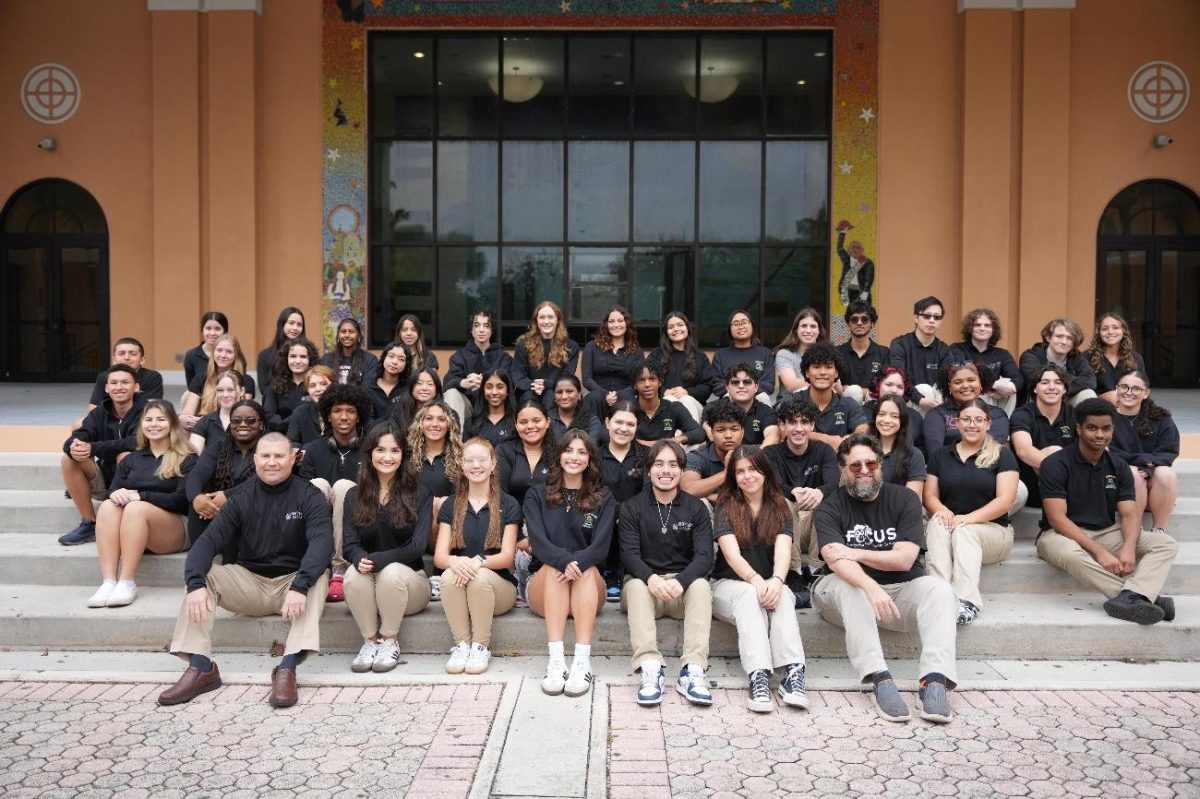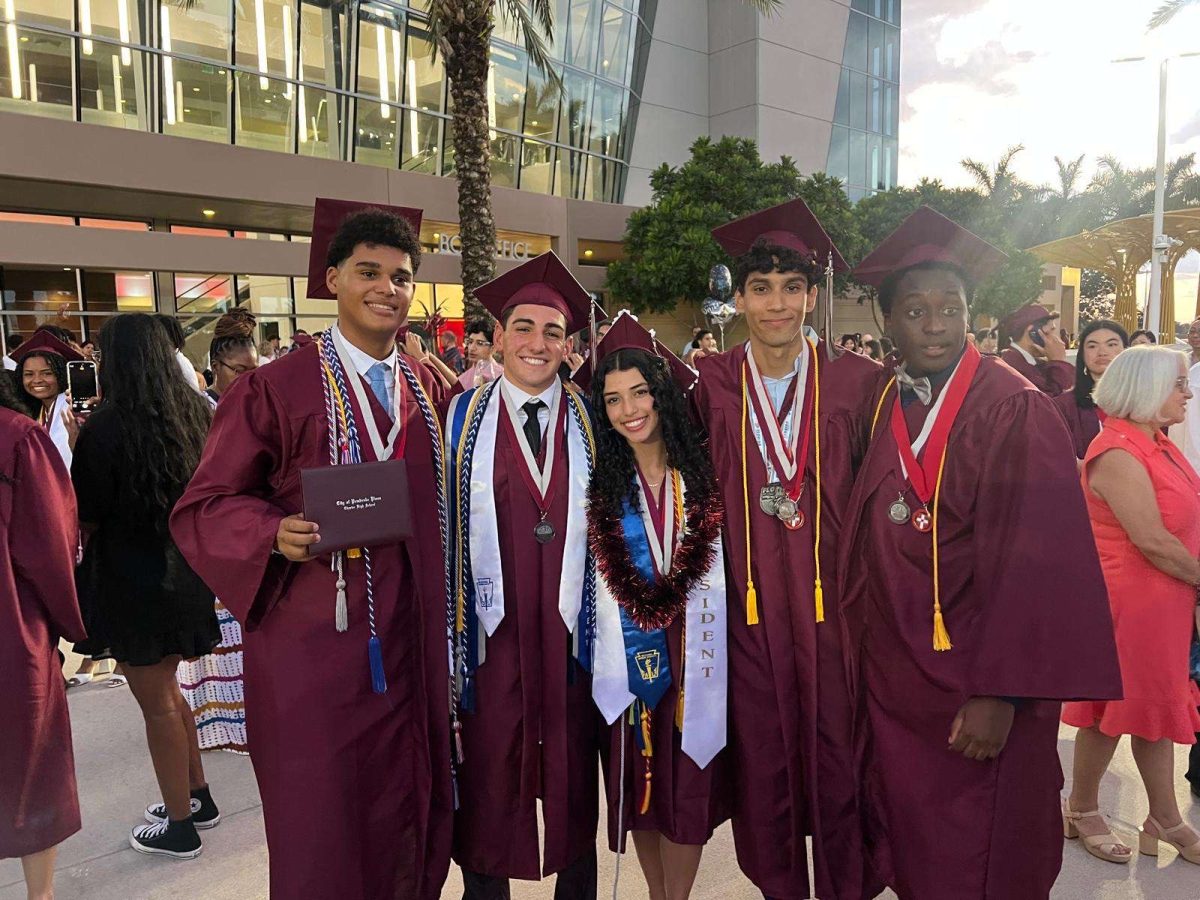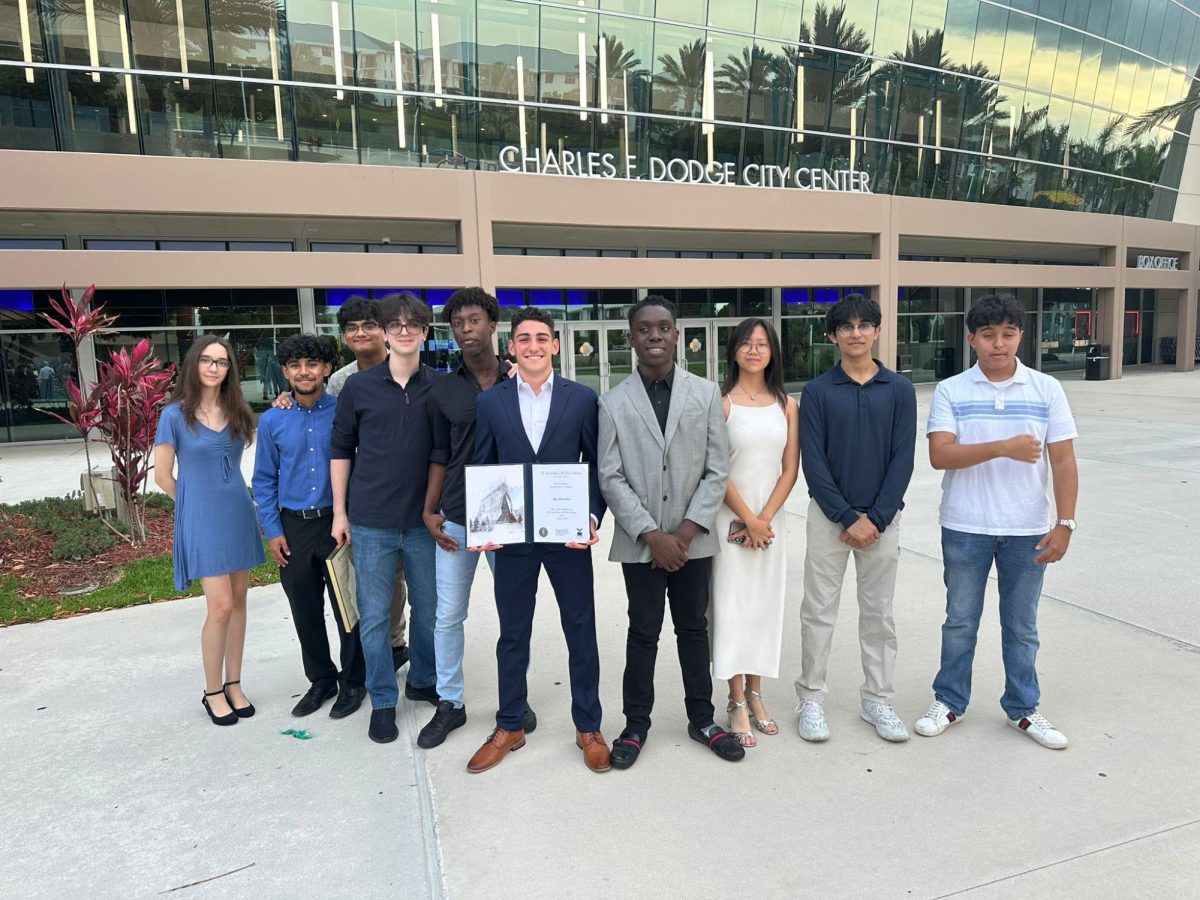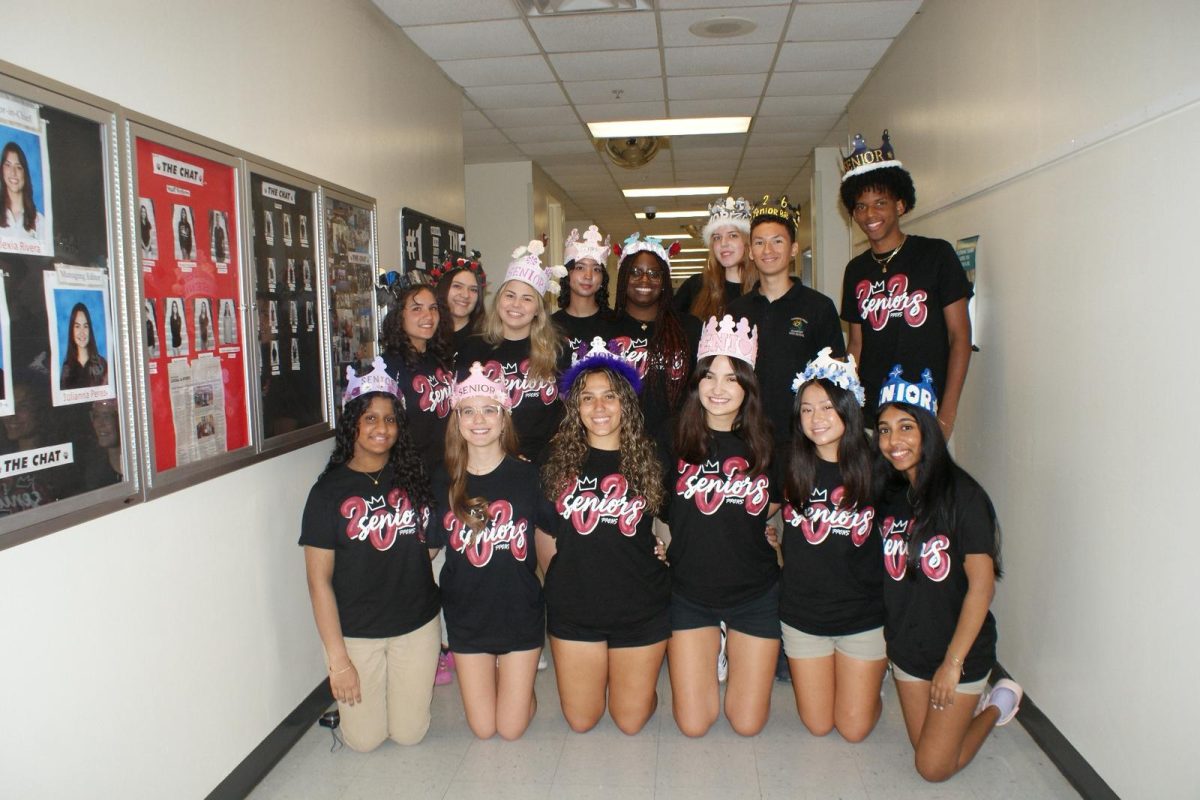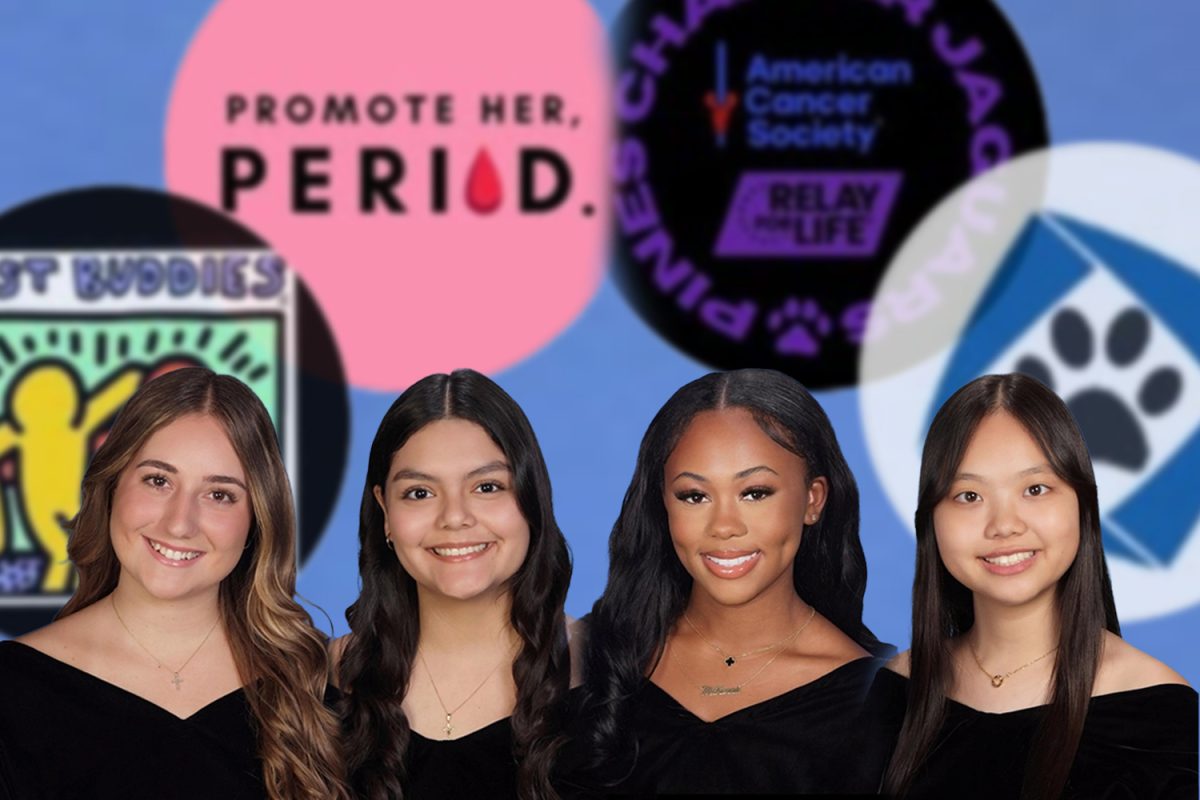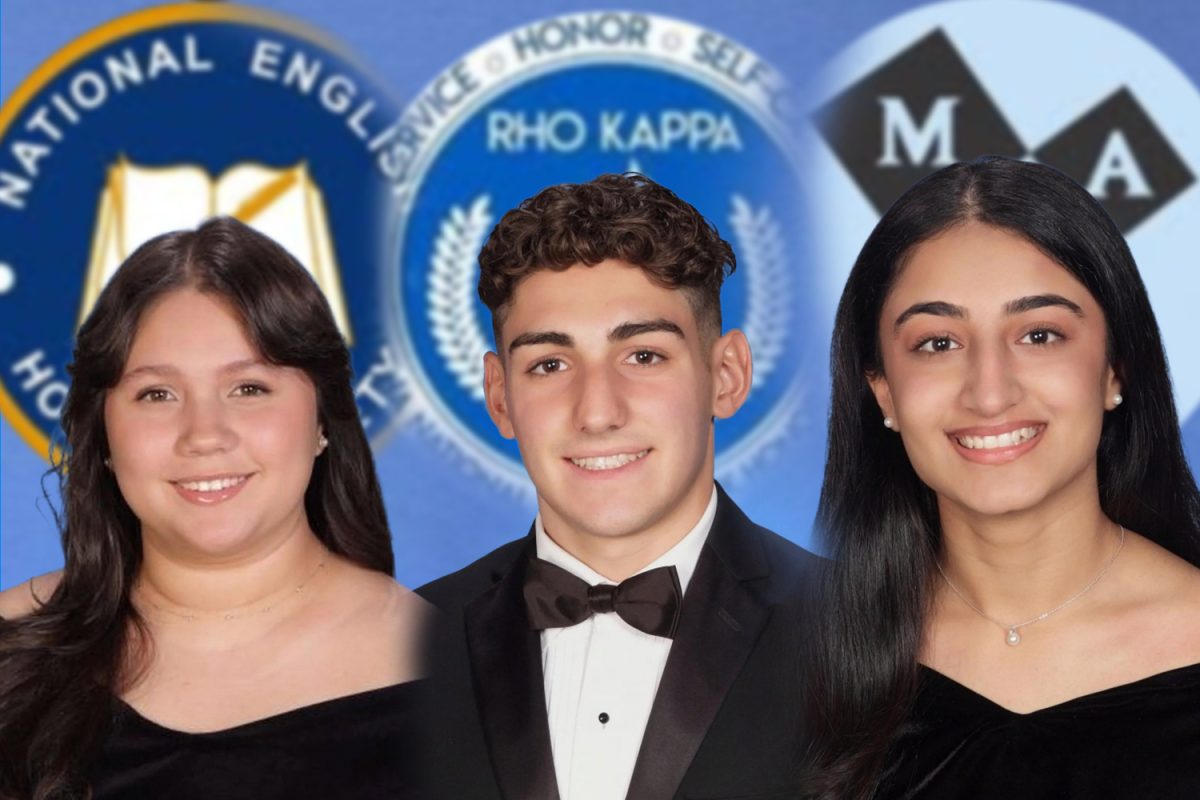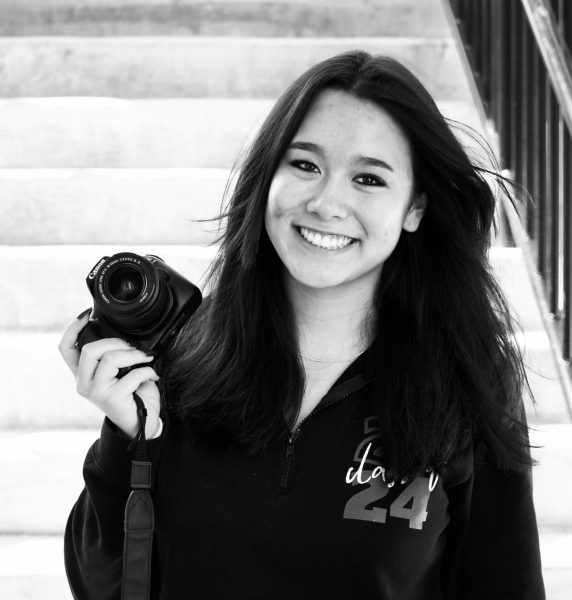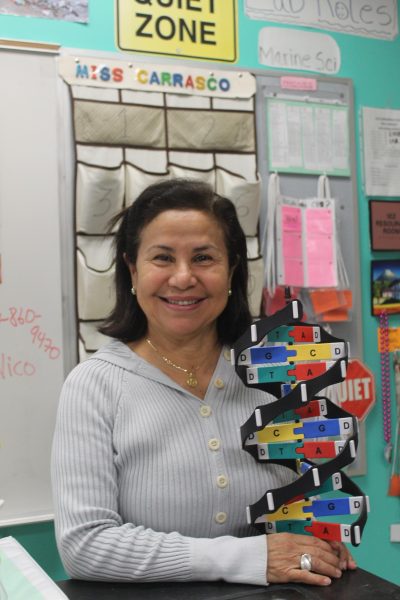
In the corner of her classroom stands a small shelf, filled with Ziploc bags containing sand. From the coasts of Panama, Trinidad, Mexico, Ecuador, and even Israel, Mrs. Carrasco’s classroom is where countries from hundreds of miles across the globe sit inches away from one another. However, her collection carries much more than just sand alone—it carries the memories made by students, students Mrs. Carrasco cherishes her time with from August to June. Her sand collection is a keepsake for her that will last beyond those months, forever remaining at PPCHS.
Mrs. Carrasco’s journey began with a passion for marine biology. “I’ve always liked the ocean. I wanted to be a marine biologist,” she reflects. Yet, after studying marine biology and marine environmental science in college, she decided to channel her passion for our planet into a classroom environment. “I love it. I think knowing about the ocean gives students a notion of what’s really happening. If the environment changes, we change … I think that knowing about marine science gives me a better idea of how the world works. It’s shaped me as a person.” And now, after 26 years of teaching marine science at different schools, Mrs. Carrasco has finally settled down into room S101—a place where learning comes to life.
The collection isn’t just in the classroom, it is also a part of it, as the samples of sand are often incorporated into Mrs. Carrasco’s lessons. “It’s tied in because we talk about the organisms that live in different areas, and sand is broken pieces or remains of fossils of those organisms that live in that particular area.” In her labs and lessons alike, she often holds a bag of sand with pride, as she teaches her class.
One bag and three words started it all. In hopes that her students would return from overseas with a bag of sand in hand for her to display in her class, Ms. Carrasco asked her students one last question before they left her classroom for break: “Are you traveling?” This tradition traces back to about 10 years ago at Somerset Academy, where a student brought her a bag of sand during her travels. But once a collection begins, it grows. Carrasco now labels her sand with “Costa Rica”, “Panama”, “South Africa”, and so on.
While the AICE Marine Science teacher’s collection consists mostly of student contributions, she also attributes her growing sand supply to her own friends and relatives as well as trips she’s taken around the world. From her travels to states such as Louisiana, to travels that paid homage to her Ecuadorian roots, Mrs. Carassco’s collection features gatherings from the Mississippi to South America.
From vivid, blue, and salty seas to beige, humid deserts, the planet has a diverse range of environments. But one thing that brings the opposite ends of the world together is Ms. Carassco’s classroom, and it will continue to grow for the future classes of students to walk through PPCHS’s halls.

